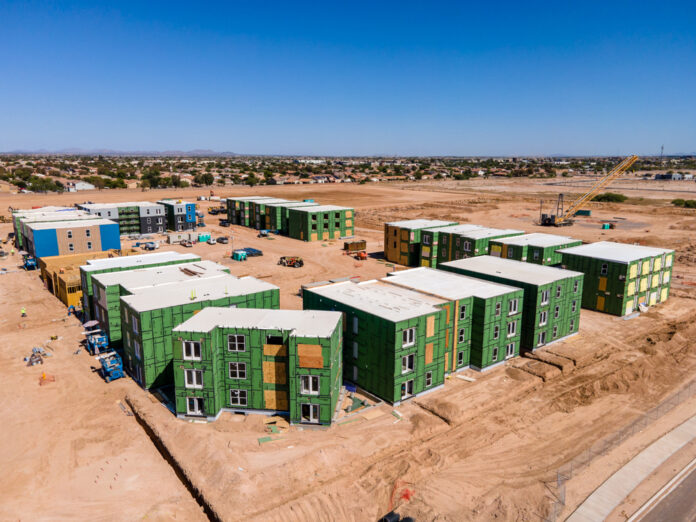
The train has left the station on explosive growth in Maricopa. Like it or not, it is coming at the city fast and will continue into the foreseeable future.
By all measurements, Maricopa’s supply of affordable workforce and senior living is critically low right now with a population hovering around 70,000. As the city crosses the threshold into six figures in the near future, creating affordable housing for those who perform essential services, including teachers and firefighters, rises to the top of the to-do list.
So what do you do?
We asked in this week’s readers’ poll: “As city planners and leaders continue to sign off on large apartment complexes, are you OK with all the new high-density living options?” An overwhelming majority suggested slowing it down until streets catch up with growth.
The response, “No, it’s only going to further clog streets and highways that already are overburdened,” drew 73 percent.
The response, “Yes, the inventory of affordable workforce and senior living choices in the city is far behind demand,” elicited 16.1%.
And 11% acknowledged, “Not sure, but it is a tricky balance for the city” as leaders work to attract high-paying jobs, big retailers and more industrial development.
As of February 2021, there were 91,835 people in the Maricopa trade area, which includes Maricopa, unincorporated Pinal County land, Ak-Chin Indian Community, Gila River Indian Community and Stanfield.
A “trade area” is the geographic area from which a business enterprise or center of retail or wholesale distribution draws most of its business. In simpler terms, it is the greatest distance consumers are willing to travel to buy goods and services.
It’s a difficult balance for city leaders.
The dizzying array of apartment complexes planned or under construction will only challenge a street system already stressed. It’s going to be necessary to tweak the system to accommodate growth.
Growth in single-family housing is equally dizzying. The Maricopa trade area had 28,344 single-family homes in February 2021, according to Nathan Steele, the city’s chief economic development officer.
The 23,956 homes in Maricopa a little less than a year ago will grow to 65,000 homes when another 41,000 or so homes in the city limits already approved are built and sold to buyers.
That growth will be even more dramatic in unincorporated Pinal County, where the current 3,241 homes in the Maricopa trade area will grow to 75,000-plus homes when all the residential developments already approved are constructed.
A trade-area population of more than 458,000 in years ahead is possible, which would be the equivalent of the combined population of Chandler and Tempe today.
And while many of the coming homes – about 75% – would lie outside Maricopa’s city limits if built today, the belief is many of those residential communities will want to be annexed to gain access to better city-provided services (police and fire protection) and community amenities (parks, schools and libraries).




![Elena Trails releases home renderings An image of one of 56 elevation renderings submitted to Maricopa's planning department for the Elena Trails subdivison. The developer plans to construct 14 different floor plans, with four elevation styles per plan. [City of Maricopa]](https://www.inmaricopa.com/wp-content/uploads/2024/04/city-041724-elena-trails-rendering-218x150.jpg)

![Affordable apartments planned near ‘Restaurant Row’ A blue square highlights the area of the proposed affordable housing development and "Restaurant Row" sitting south of city hall and the Maricopa Police Department. Preliminary architectural drawings were not yet available. [City of Maricopa]](https://www.inmaricopa.com/wp-content/uploads/2024/04/041724-affordable-housing-project-restaurant-row-218x150.jpg)










![Elena Trails releases home renderings An image of one of 56 elevation renderings submitted to Maricopa's planning department for the Elena Trails subdivison. The developer plans to construct 14 different floor plans, with four elevation styles per plan. [City of Maricopa]](https://www.inmaricopa.com/wp-content/uploads/2024/04/city-041724-elena-trails-rendering-100x70.jpg)